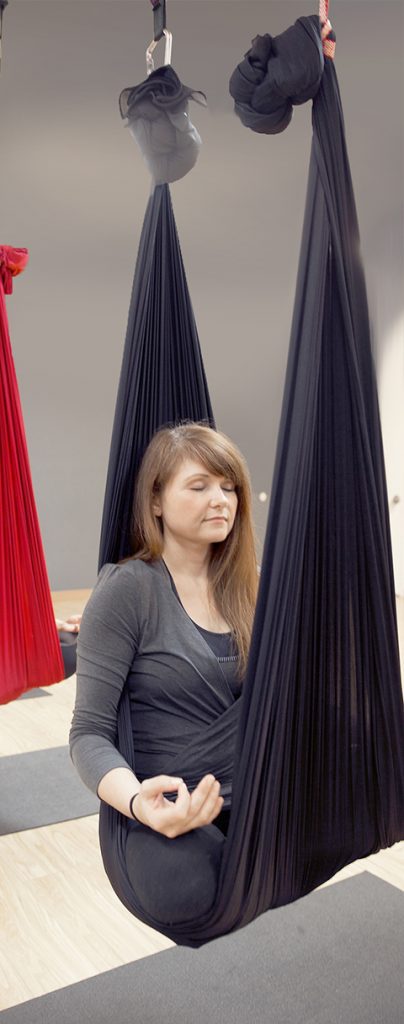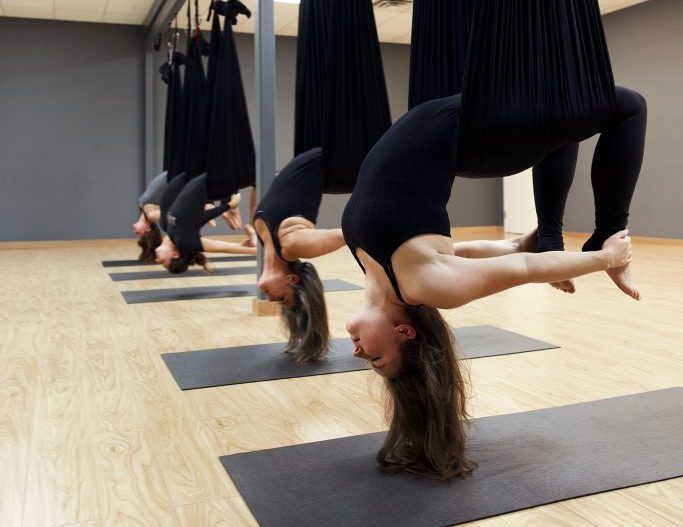It defies gravity and may seem like training for Cirque du Soleil, but aerial yoga combines the tenants of Pilates and acrobatics to help participants achieve poses they never thought possible.

Aerial yoga, similar to traditional yoga, has a few bonuses: deeper stretching; strengthening oft-unused muscles; and relaxing into the compression and support of a fabric hammock.
Using a hammock as a prop is the primary difference between classic and aerial yoga, says Amy Miller, owner of Zen Body Yoga and Wellness in Tulsa.
“The hammock can create a more comprehensive session by making some poses more challenging and advanced, while alternatively making some poses softer and more accessible,” she says. “Most, if not all, classical yoga poses can be re-imagined or refined with the fabric as a prop.”
Aerial yoga, begun in New York City in 2007 by Broadway choreographer and former gymnast Christopher Harris, continues to gain popularity and has made its way to Oklahoma. The workout offers a bevy of positive outcomes, including increased flexibility, joint decompression, core strengthening and relief of back pain.
“It can facilitate alignment in standing postures, add a new outlook by inverting seated postures, and create accessibility for those who should not bear weight on certain joints,” Miller says. “For some, the primary benefit comes from the psychological challenge of letting go of fear. While sometimes we haven’t developed the strength or flexibility to master a challenging yoga pose – such as arm balances, inversions and back bends – the hammock provides assistance as we work toward these goals.”
Zen Body Yoga offers two types of aerial yoga. AeroZen Float is a gentle, restorative version suitable for most levels and increases balance and body awareness. The challenging AeroZen Fly requires a participant to take a basics workshop before enrolling. In this version, a person builds strength and flexibility while enjoying creative transitions and strong inversion (or upside-down) practice. Visit zenbodytulsa.com for details.
Aerial yoga also eliminates the discomfort of hard floors as well as the pressure created by some of the poses, according to Lynn Crowe-Richardson, owner and instructor at Teaze Dance and Fitness in Oklahoma City.
“Hanging upside down, also known as inverting, is a way to obtain back decompression as well as deep stretching,” Crowe-Richardson says. “Inversions are obtained easily and they allow handstands to be achieved without the head, neck and spine pressure against the floor.
“Our clients enjoy working on their splits and deep leg stretches while sitting in the fabric because they are not feeling the hard floor against their hips and knees as they work to gently deepen the stretch.”
At the end of each class, Teaze offers a cool-down that includes cocooning in the hammock and focusing on deep-breathing exercises, progressive muscle relaxation, visualization, positive thoughts and meditation. Visit teazedance.com for schedules.


























